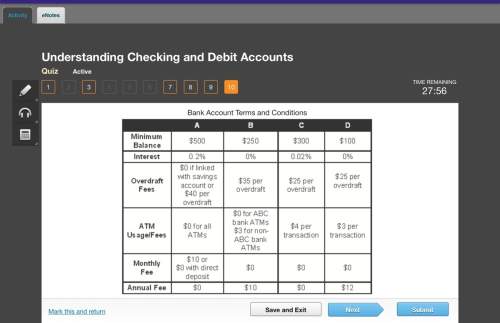
Business, 06.05.2020 20:09 romedome15
Suzy contributed assets valued at $360,000 (basis of $200,000) in exchange for her 40% interest in Suz-Anna GP (a general partnership). Anna contributed land and a building valued at $640,000 (basis of $380,000) in exchange for the remaining 60% interest. Anna’s property was encumbered by a qualified nonrecourse debt of $100,000, which was assumed by the partnership. The partnership reports the following income and expenses for the current tax year:
Sales
$560,000
Utilities, salaries, and other operating expenses
360,000
Short-term capital gain
10,000
Tax-exempt interest income
4,000
Charitable contributions
8,000
Distribution to Suzy
10,000
Distribution to Anna
20,000
During the current tax year, Suz-Anna refinanced the land and building. At the end of the year, Suz-Anna had recourse debt of $100,000 for partnership accounts payable and qualified nonrecourse debt of $200,000.
a. What is Suzy’s basis after formation of the partnership? Anna’s basis?
b. What income and separately stated items does the partnership report on Suzy’s Schedule K–1? What items does Suzy report on her tax return?
c. Assume that all partnership debts are shared proportionately. At the end of the tax year, what are Suzy’s basis and amount at risk in her partnership interest?
Need problem 47 to work problem 48, problem 48 is the problem I am looking for.
LO.11 Assume the same facts as in Problem 47, and assume that Suz-Anna prepares the capital account rollforward on the partners’ Schedules K–1 on a tax basis.
a. What is Suzy’s capital account balance at the beginning of the tax year?
b. What is Suzy’s capital account balance at the end of the tax year?
c. What accounts for the difference between Suzy’s ending capital account and her ending tax basis in the partnership interest?

Answers: 1


Another question on Business

Business, 21.06.2019 20:30
Anewspaper boy is trying to perfect his business in order to maximize the money he can save for a new car. daily paper sales are normally distributed, with a mean of 100 and standard deviation of 10. he sells papers for $0.50 and pays $0.30 for them. unsold papers are trashed with no salvage value. how many papers should he order each day and what % of the time will he experience a stockout? are there any drawbacks to the order size proposed and how could the boy address such issues?
Answers: 3

Business, 22.06.2019 02:40
Aquatic marine stores company manufactures special metallic materials and decorative fittings for luxury yachts that require highly skilled labor. aquatic uses standard costs to prepare its flexible budget. for the first quarter of the year, direct materials and direct labor standards for one of their popular products were as follows: direct materials: 3 pounds per unit; $ 6 per pound direct labor: 4 hours per unit; $ 19 per hour during the first quarter, aquatic produced 5 comma 000 units of this product. actual direct materials and direct labor costs were $ 65 comma 000 and $ 330 comma 000, respectively. for the purpose of preparing the flexible budget, calculate the total standard direct materials cost at a production volume of 5 comma 000 units.
Answers: 2

Business, 22.06.2019 14:20
Frugala is when sylvestor puts $2,000 into 10-year state bonds and $3,000 into 5-year aaa-rated bonds in steady hand hardware, inc. he buys the four state bonds at a 5 percent interest rate and the three steady hand bonds at a 6.5 percent rate. sylvestor also buys $1,500 worth of blue chip stocks, and $800 worth of stock in a promising new sportswear company that reinvests its earnings in new growth. 1. (a) what is the maturity for each of the bond groups sylvestor buys? (b) the coupon rate? (c) the par value?
Answers: 3

Business, 22.06.2019 17:00
Cadbury has a chocolate factory in dunedin, new zealand. for easter, it makes two kinds of “easter eggs”: milk chocolate and dark chocolate. it cycles between producing milk and dark chocolate eggs. the table below provides data on these two products. demand (lbs per hour) milk: 500 dark: 200 switchover time (minutes) milk: 60 dark: 30 production rate per hour milk: 800 dark: 800 for example, it takes 30 minutes to switch production from milk to dark chocolate. demand for milk chocolate is higher (500lbs per hour versus 200 lbs per hour), but the line produces them at the same rate (when operating): 800 lbs per hour. a : suppose cadbury produces 2,334lbs milk chocolate and 1,652 lbs of dark chocolate in each cycle. what would be the maximum inventory (lbs) of milk chocolate? b : how many lbs of milk and dark chocolate should be produced with each cycle so as to satisfy demand while minimizing inventory?
Answers: 2
You know the right answer?
Suzy contributed assets valued at $360,000 (basis of $200,000) in exchange for her 40% interest in S...
Questions

Mathematics, 13.09.2020 14:01

Mathematics, 13.09.2020 14:01

Mathematics, 13.09.2020 14:01

Social Studies, 13.09.2020 14:01

Mathematics, 13.09.2020 14:01

Mathematics, 13.09.2020 14:01

History, 13.09.2020 14:01

Mathematics, 13.09.2020 14:01

Mathematics, 13.09.2020 14:01

Mathematics, 13.09.2020 14:01

Mathematics, 13.09.2020 14:01

Mathematics, 13.09.2020 14:01

Mathematics, 13.09.2020 14:01

Mathematics, 13.09.2020 14:01

Mathematics, 13.09.2020 14:01

Mathematics, 13.09.2020 14:01

History, 13.09.2020 14:01

Mathematics, 13.09.2020 14:01

Mathematics, 13.09.2020 14:01

Mathematics, 13.09.2020 14:01




